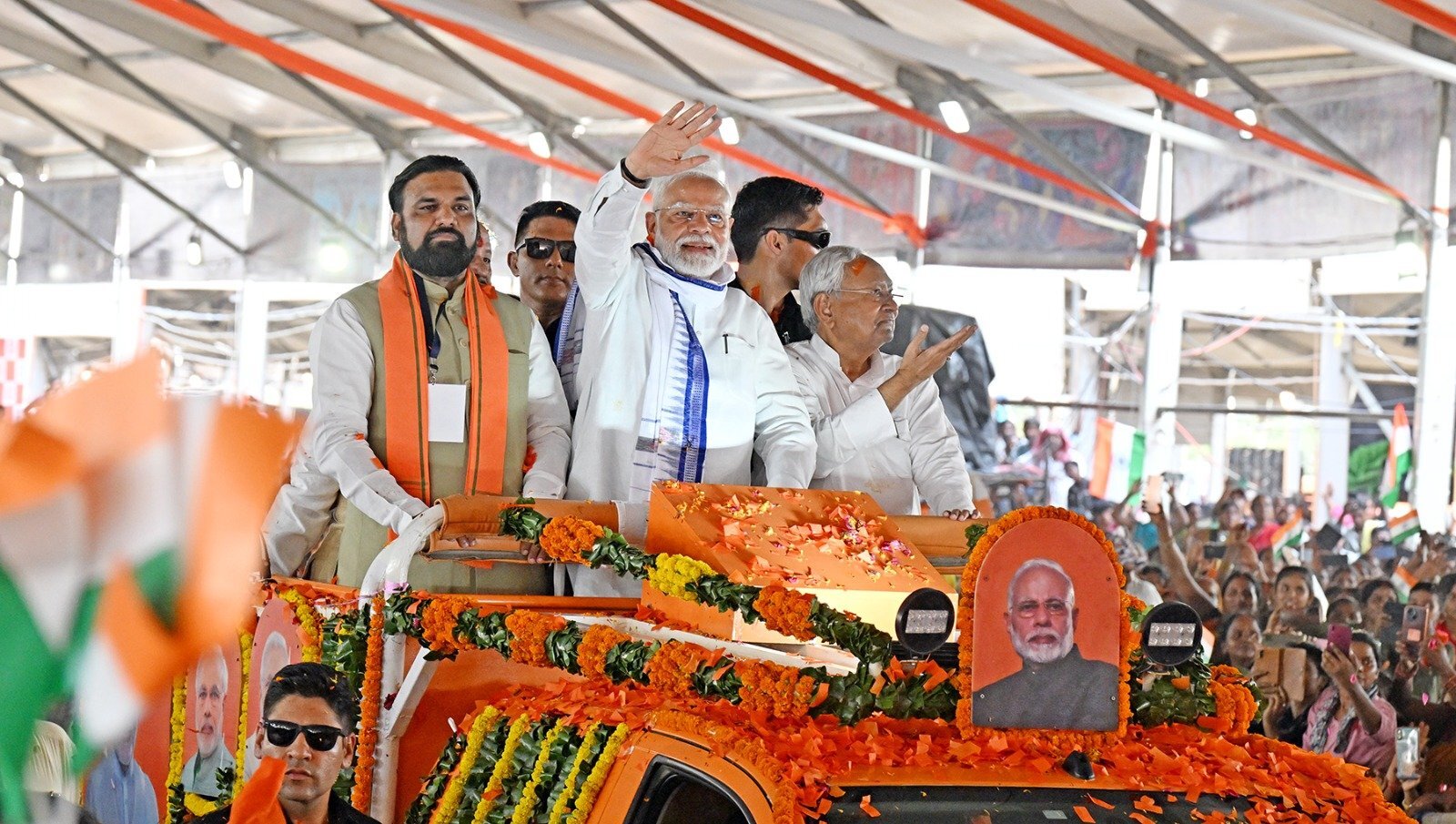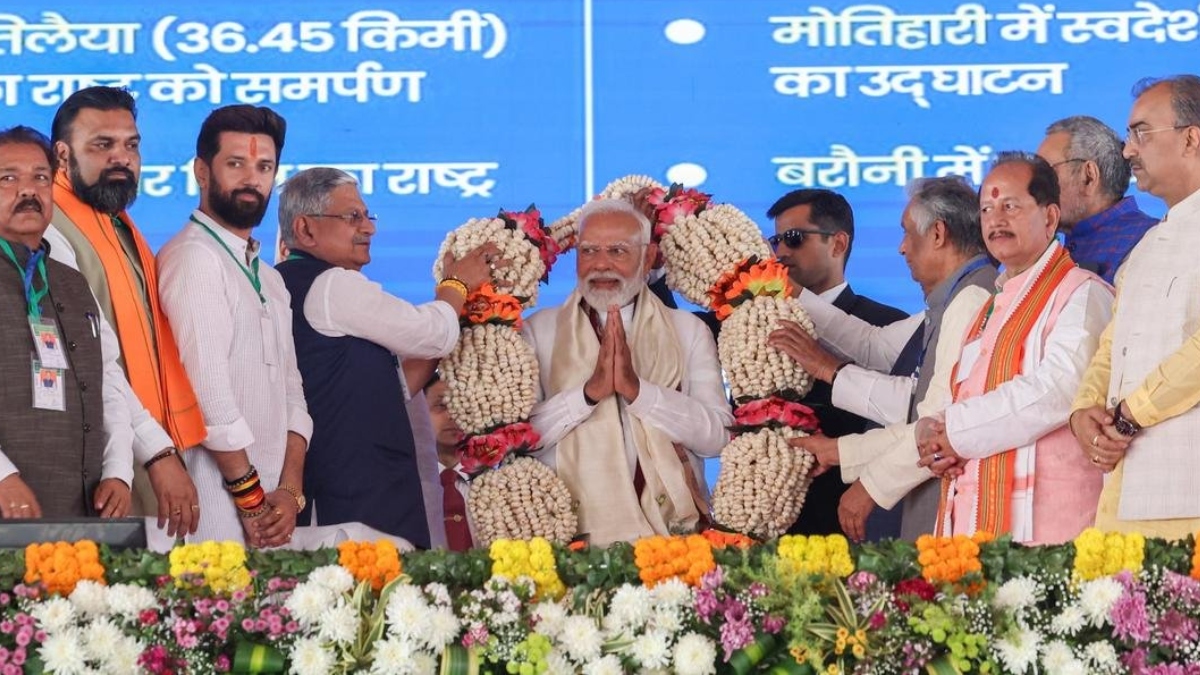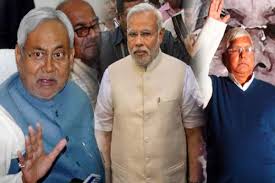A Tale of Two Bihars: Between Torchlight and Lanterns
“Two Visions for Bihar: Modi’s Call for Development vs RJD’s Return to Gundaraj Politics”
Paromita Das
New Delhi, 25th October: As Bihar steps deeper into election season, the state once again finds itself torn between two strikingly different visions of governance. On one hand stands Prime Minister Narendra Modi, rallying voters in Begusarai with the promise of progress, stability, and self-reliance. On the other, the Rashtriya Janata Dal (RJD) and its supporters appear to be reviving an unsettling nostalgia — a yearning for the so-called “gundaraj” era that once defined Bihar’s political landscape.
This contrast—between a development-driven discourse and one rooted in fear, caste, and dominance—reflects not just a political divide but a battle for Bihar’s very identity. Will the state march forward toward modernization or retreat to its darker past?
Modi’s Message: From Lanterns to Light, From Chaos to Change

At his Begusarai rally, Prime Minister Modi’s tone was sharp, confident, and filled with conviction. He accused the RJD and Congress of reducing Bihar to chaos during their rule—an era he described as one of “jungle raj,” where lawlessness, corruption, and fear crippled growth.
Modi contrasted that with the National Democratic Alliance’s record under Chief Minister Nitish Kumar, pointing to improvements in infrastructure, road connectivity, electricity, and welfare access. The symbolism was powerful: “Now Bihar doesn’t need lanterns. Every hand has a mobile torch.”
His message wasn’t just metaphorical—it was political. The “lantern,” the RJD’s election symbol, stood for a bygone age of darkness, while the “torchlight” represented progress, digital empowerment, and self-reliance. He claimed that under NDA governance, Bihar has moved from fear to faith, from stagnation to speed.
In Modi’s framing, the coming election isn’t merely a contest between alliances; it’s a referendum between two eras—between the developmental governance of the NDA and the destructive politics of the RJD-Congress alliance.
RJD’s Counter-Narrative: Songs of Power, Not of Progress
In stark contrast, the RJD’s campaign—both online and on the ground—has taken a dramatically different tone. Instead of songs celebrating infrastructure, jobs, or education, the internet is flooded with Bhojpuri tracks glorifying guns, lathis, and a “Yadav Raj.”
*USE headphones… 🎧
RJD = यादवों का राज? 🤔
बिहार में 1990 का गुंडाराज वापस लाने की तैयारी है?
विपक्ष में यह हालत है… तो सरकार में आने पर पता नहीं क्या करेंगे… 🤔 pic.twitter.com/0xogpr9Kvl
— Mohit Bharat (@MohitBharatYBP) October 8, 2025
These songs are not just campaign jingles—they are statements of identity and dominance. Lyrics promising the “return of Rabri Yadav’s rule” or threatening opponents with violence reflect a deep-rooted nostalgia for an era of unchallenged power. Social media clips featuring gun-toting supporters have gone viral, showcasing a performative masculinity that equates strength with intimidation.
For many observers, this revival of “gundaraj” imagery signals a worrying shift. It replaces the conversation on jobs, education, and social welfare with one on caste pride and raw authority. The glorification of such dominance points to an attempt to emotionally mobilize voters through fear and nostalgia, rather than vision or policy.
Why RJD’s Gundaraj Narrative Resonates

To understand why this narrative persists, one must look beyond the optics. For some, the so-called gundaraj era is remembered not just for lawlessness but as a time of empowerment for castes that historically felt excluded from Bihar’s upper-caste political elite. The songs and slogans celebrating Yadav supremacy are an assertion of identity, power, and belonging.
Moreover, the dominance narrative serves as a convenient distraction from the RJD’s weaknesses on development. Talking about jobs or infrastructure invites accountability—questions about what was delivered or lost during past regimes. But glorifying power and identity demands no such proof; it appeals directly to emotion, bypassing reason.
Simply put, when a party cannot convincingly promise a better future, it may instead promise the return of familiar power.
The Stark Contrast: Development vs Dominance

This election, therefore, is not merely about who will win Bihar—it is about what kind of Bihar will emerge.
Modi’s Begusarai speech was rooted in a forward-looking agenda—industrial growth, youth employment, connectivity, and good governance. It seeks to remind voters of Bihar’s transformation under infrastructure-led growth and women-centric welfare.
The RJD’s rhetoric, however, looks backward. Its campaign feeds off emotional nostalgia and cultural symbolism rather than policy. Where one side talks about building roads, schools, and factories, the other revels in songs of might, caste hierarchy, and street power.
For the state’s millions of migrating youth, these two narratives send opposite messages. One offers a vision of staying and building a life in Bihar; the other evokes a time when leaving was the only option.
Bihar’s Political Crossroads

The contrast between Modi’s development narrative and RJD’s dominance rhetoric is not just ideological—it’s generational. Bihar’s young voters, who make up a massive share of the electorate, have grown up hearing stories of jungle raj but have also lived through an era of expanding infrastructure and opportunity.
To them, songs about lathis and lanterns may sound outdated—symbols of a time when Bihar was synonymous with backwardness. The aspiration now is for jobs, dignity, and opportunity, not fear and caste superiority.
Yet, nostalgia can be a powerful force in politics. By reviving the gundaraj narrative, RJD taps into emotional identity politics that can’t be easily dismissed. The question is whether such emotion can withstand the weight of Bihar’s developmental realities.
Bihar’s Choice Between Past and Progress
Bihar stands at a decisive crossroads. Modi’s Begusarai pitch emphasizes progress, prosperity, and governance built on performance. The RJD’s counter-narrative romanticizes the past—a return to identity-based dominance and street power.
The upcoming polls will reveal whether Bihar’s voters want to continue along the road to development or turn back toward the politics of fear and nostalgia.
Ultimately, the state’s future depends on which song the people choose to sing: one that celebrates factories, schools, and jobs—or one that glorifies lathis, caste pride, and dominance.
For Bihar to truly rise, it must choose not the loudest voice—but the one that builds.


Comments are closed, but trackbacks and pingbacks are open.